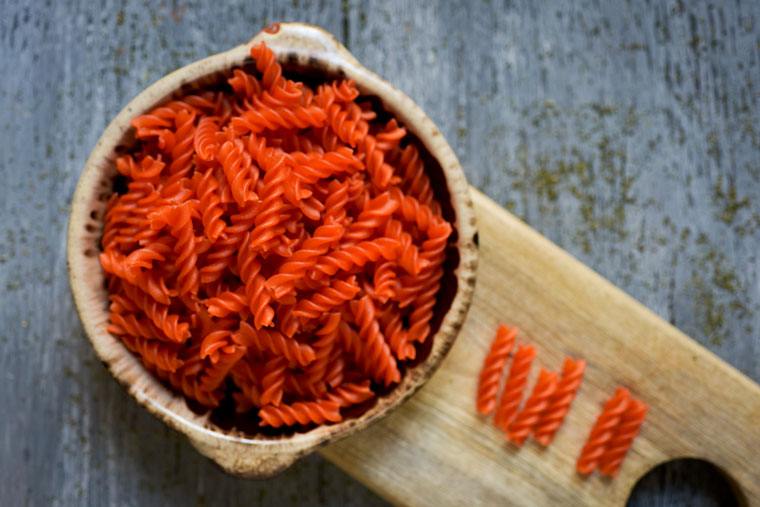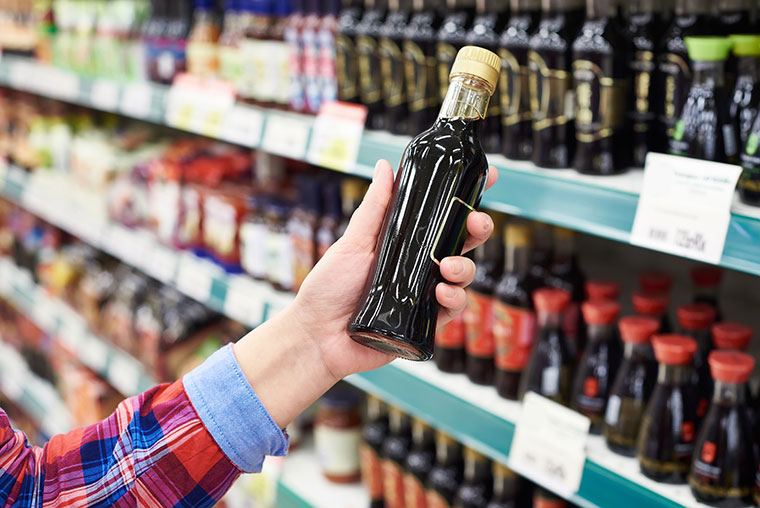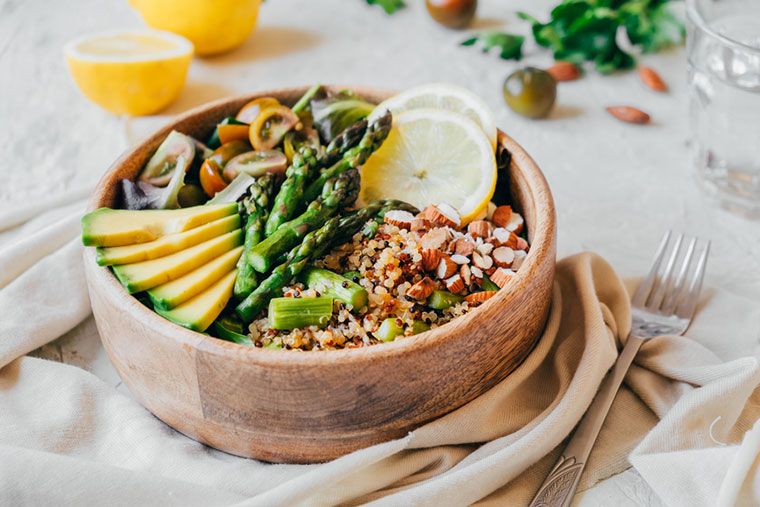Living a gluten-free life is becoming more popular even for people who don't have celiac disease. After all, some doctors are raising the alarm about its inflammation-causing properties, and it can cause some uncomfortable gut probs even if you aren't full-on allergic.
And food brands have definitely caught on—you can tell because the gluten-free section is no longer just confined to a single shelf in aisle six. From alternative flours and grain-free breads to pasta made from black beans, edamame, or chickpeas, there are more options than ever. But alas, ridding your life of the wheat protein (and current nutritional villain) is not quite that simple.
"There's a difference between truly being celiac, having an intolerance, and sticking to an anti-inflammatory diet."
Tracy Lockwood, RD, founder of Tracy Lockwood Nutrition, says it's important to keep in mind why you're going gluten-free. "There's a difference between truly being celiac, having an intolerance, and sticking to an anti-inflammatory diet," she says.
Lockwood says celiac disease—AKA you have a bad reaction to even a touch of gluten—should be taken the most seriously. "You need to treat it like having a peanut allergy and make sure the food you're buying says it was made in a gluten-free facility—otherwise there could be cross-contamination," she says. Meanwhile, if you're intolerant, "It's up to you how much you want to cut out—and whether you're willing to put up with a stomachache because your meal has a bit of it."
Regardless of your reason for cutting ties with it, though, most people stumble over the same issues when ditching bread and pasta's BFF from their lives, she says.

{{post.sponsorText}}
Keep reading for the 3 mistakes you're likely to make when going gluten-free—and how to avoid them.

1. Assuming the "gluten-free" label makes it healthier
Lockwood says the biggest mistake people make is automatically buying something advertised as "gluten-free", assuming that it's an indicator that it's healthier for you. "Many food products that don't have gluten are actually more processed and higher in sugar and fat," she says. "Gluten is a protein that helps give foods like bread, cakes, and cookies structure, so without it often [food manufacturers] add more sugar and fat to make up for that. Otherwise, people won't like the texture."
Rule of thumb: Check the nutrition info on the label to make sure what you're eyeing is really good for you, looking out for tell-tale ingredients like cornstarch and potato starch, which are both low in nutritional value and often contain GMOs.

2. Not knowing where else gluten is hiding on the ingredients list
You may be splurging on (or spending extra effort to track down) alt-pastas and grain-free bread, but all that legwork could be for nothing: Gluten might still be hiding in your food. "Maltodextrin, MSG, and hydrolyzed vegetable proteins are all derivatives of it," Lockwood explains.
And yes, they pop up in surprising places. Among the most common foods you'll see these processed ingredients are soy sauce, salad dressing, and candy. (Yes, that goes for when you're eating out, too.)

3. Missing out on key nutrients
Lockwood's best advice for anyone going gluten-free is to focus less on finding alt-products and more about filling up on fruit, veggies, beans, lean meats, and grains that are naturally gluten-free, like brown rice. "That way, you know what you're eating is healthy and you aren't consuming foods that are super processed or loaded with sugar," she says.
Plus, you'll know you're getting everything your body needs, which isn't necessarily the case if you're boiling chickpea pasta for dinner every night. You might even be OD-ing on something you should only have in moderation. "Especially with gluten-free alternatives made with soy, like edamame pasta, women need to make sure they don't eat it every day—too much soy messes with your hormones," Lockwood says.
Her advice? Simple is best when it comes to labels—which is something to keep in mind no matter what eating plan you're following. (Or, really, with life in general.)
Sometimes, gluten isn't the cause of gut problems—here's how to know if the real culprit could be lectins. Plus, keep in mind there's a downside to cutting it out of your diet for good.
Loading More Posts...